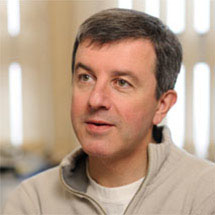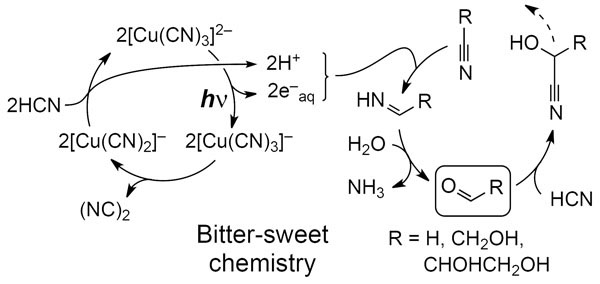 New research, from John Sutherland and Dougal Ritson in the LMB’s PNAC division, delivers a breakthrough in the chemistry of the origin of life. Whilst some maintain that life formed elsewhere in the Universe and was transported to earth, the duo’s findings, published in Nature Chemistry, suggest that the genetic material essential for all known life originated from nothing more than our primitive planet’s atmosphere and the minerals on its surface.
New research, from John Sutherland and Dougal Ritson in the LMB’s PNAC division, delivers a breakthrough in the chemistry of the origin of life. Whilst some maintain that life formed elsewhere in the Universe and was transported to earth, the duo’s findings, published in Nature Chemistry, suggest that the genetic material essential for all known life originated from nothing more than our primitive planet’s atmosphere and the minerals on its surface.
For the emergence of life, nucleic acids (such as RNA) are a fundamental requirement. Understanding how molecules like RNA first formed is essential in understanding the origins of life but, until now, scientists have been unable to generate the two simple sugars needed to synthesise RNA.
Lead researcher Dougal Ritson says: “We have discovered a way to generate the sugars needed to synthesise RNA from the simple molecules that were abundant on earth nearly four billion years ago. Ironically, the feedstock molecule is hydrogen cyanide – a molecule that is acutely toxic to us.”
John Sutherland and Dougal Ritson’s work presents a giant leap forward in prebiotic sugar synthesis, and a major advance in the quest to discover the chemical reactions behind the emergence of life on earth.

The researchers shone UV light on a solution of hydrogen cyanide and copper cyanide in water, and obtained the sugars as derivatives in excellent yield. John Sutherland’s group at the LMB is now working to try to replace copper with iron, as iron’s redox properties should prevent the derivatisation reaction and thus make free sugars.
As John Sutherland says: “Our discovery suggests that the meteorites that collided with earth billions of years ago were a treasure trove of metals, some of which would have played a crucial role in the production of the building blocks of life. Furthermore, the conditions under which the active metal complexes formed, and functioned, provide unexpected novel insights into the geochemical conditions during the early phases of the earth’s history.”
This work was supported by the Medical Research Council and the Engineering and Physical Sciences Research Council.
Further references:
Article in Nature Chemistry
John Sutherland’s Group Leader Webpage